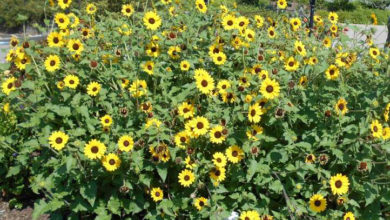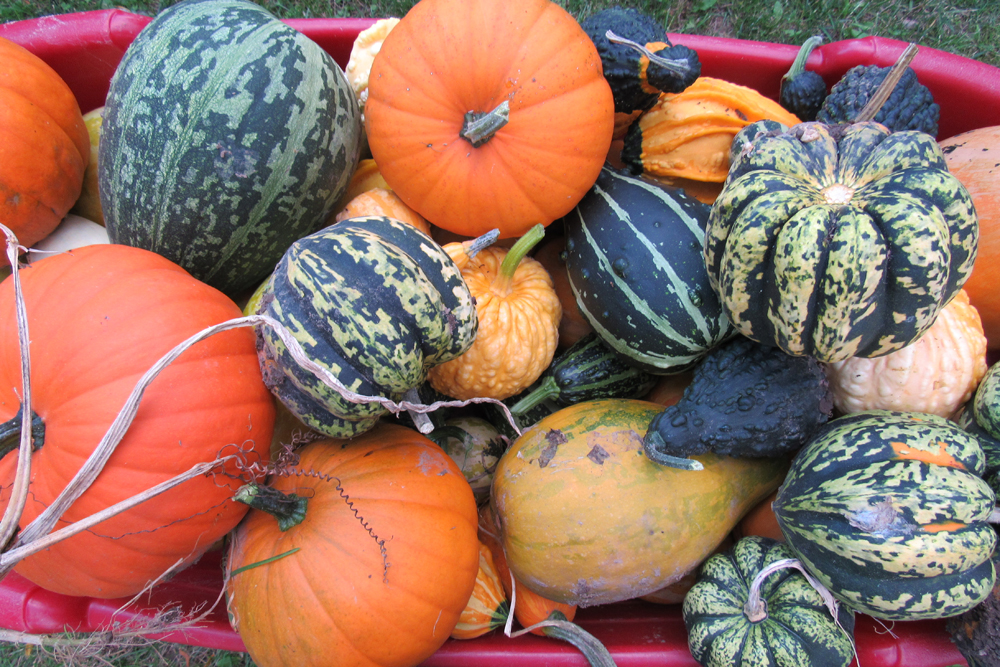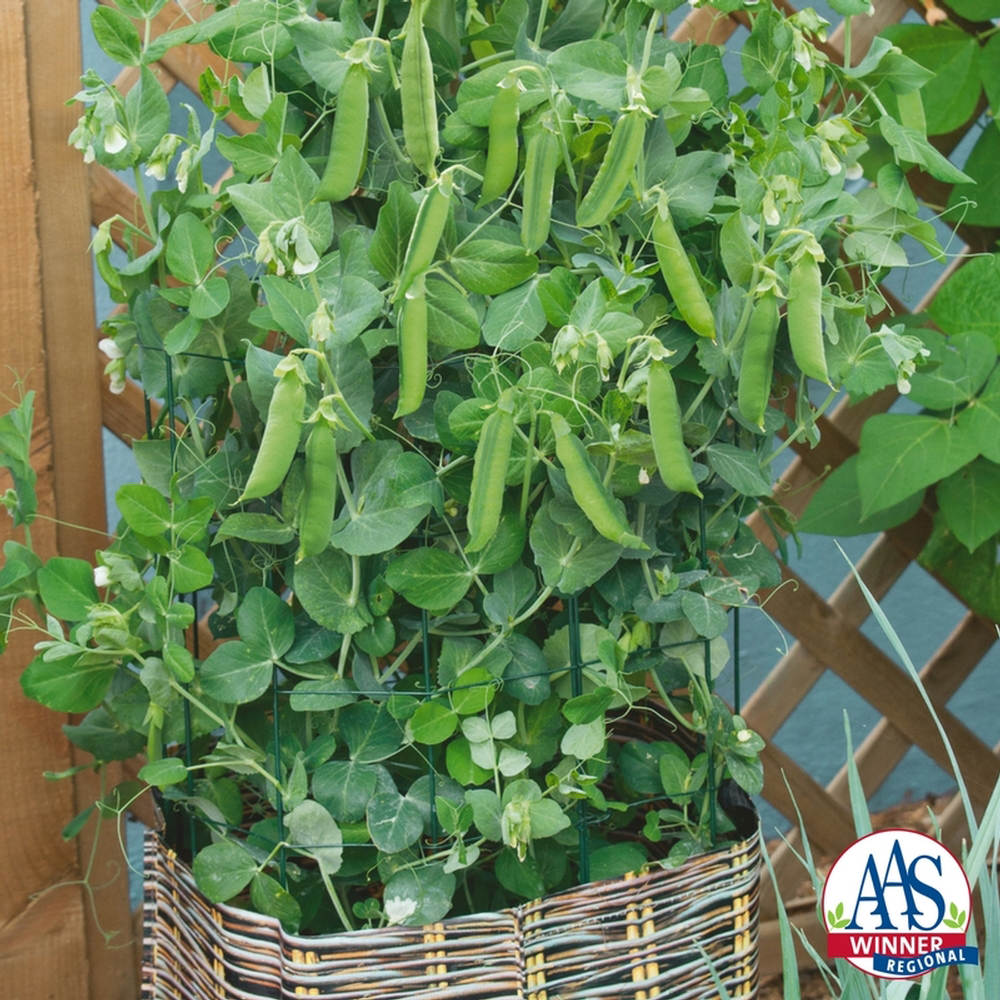A letter from a dear friend …
A recent letter to “Get Out and Grow” inspired this column on Jerusalem artichokes – Helianthus tuberosus, also known as sunchokes. Jerusalem artichokes are a North American native perennial vegetable that adapts to most soil types, even heavy clay.
Evelyn Dow, Editor Emerita of the Suburban News and Hamlin-Clarkson Herald, wrote in her letter about a harvesting excursion to her yard on one of our recent very cold and snowy spring mornings.
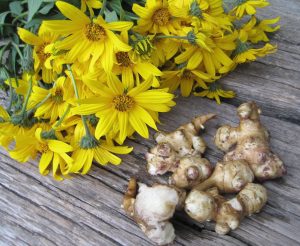
“This season is so whacky, not even the rhubarb has unfurled its leaves yet. My daffodils were encased in a quarter inch of ice only three days before, but I knew there was something that could come from the earth for our table – Jerusalem artichokes,” Evelyn writes. “It’s misnamed in every way since it did not originate in Jerusalem and it is not an artichoke, but the plant is more or less related to daisies. The edible part resembles a white potato in texture, but is sweeter and nuttier in taste, and crunchy, similar to what a freshly pulled radish would be.”
Evelyn writes that she harvested about 20 tubers that cold morning, a couple of which were as long as four inches. “After a thorough scrubbing, the chokes become a tasty and crisp raw snack and are great in salads,” Evelyn notes. “They can also be baked as well as added to cooked dishes and used like water chestnuts might be. Maybe I got the idea to grow this unusual vegetable from reading about experiences the late Tasha Tudor, or Martha Stewart (or more likely her gardener) or P. Allen Smith had growing them, or from A Chef’s Life program on PBS, when they were featured on one episode. In truth, I got the idea from a magazine I read in the way, way long ago.”
According to the University of Missouri Extension, the tuberous growth of Jerusalem artichokes contributes to their notorious spreading habit and Evelyn agrees. The knobby tubers grow a few inches underground and are very prolific.
“Last spring, I buried the cuttings from cleaning some tubers and this year I dug huge artichokes from that spot. We were well aware of the vigor of the plant after reading a warning in an “Organic Gardening” magazine article in the mid-1970s, and we began dreaming of having them in our garden.”
Evelyn remembers the article’s warning. “A gardener wanted to get rid of a plot of Jerusalem artichokes on property he had recently purchased. He put his rototiller to work and thought he had achieved his goal of eradicating the tubers by cutting them up to decay, but found later that year the plot had become a dense forest of artichoke herbaceous stems and leaves. So, if you decide to try them in your garden, be aware of what you are planting today, as well as the future implications.”
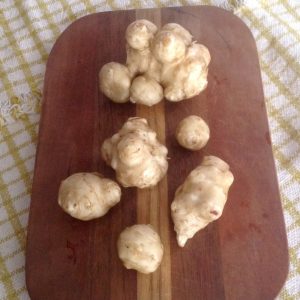
Jerusalem artichokes are planted as sections of cut up tubers – don’t let them dry out before planting.
“Ours grow about six feet tall, bear small yellow daisy-like flowers in late fall, and die back after frost,” Evelyn observes. “We usually harvest tubers around Thanksgiving and just before Christmas – before the soil freezes, and again in the springtime. The cold intensifies the sweetness of the chokes so the spring pickings are even more prized. After scrubbing, they are a soft beige color with a creamy white center. Other varieties are purple or reddish. They are high in potassium and iron and rich in niacin, thiamine, phosphorus and copper. They are available in major grocery markets almost year round – though growing them yourself is easy, and, based on yield during times of no other garden production, very satisfying.”



